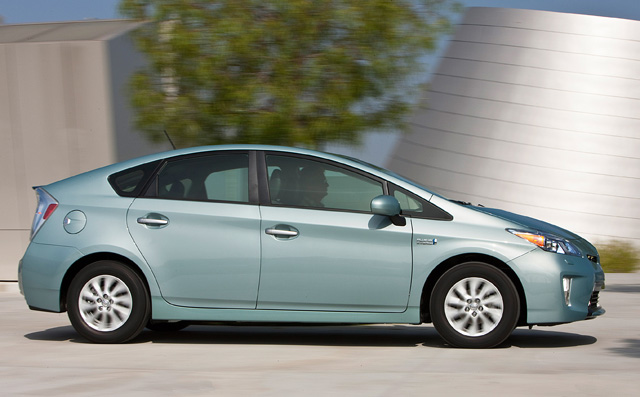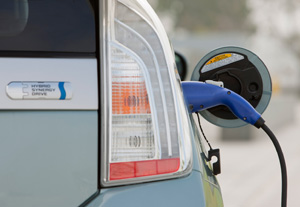
When Nissan delivered the world’s first Nissan Leaf all-electric car to its inaugural customer in San Francisco in December 2010, the company staged a media event with great fanfare in front of City Hall. By contrast, the Toyota Prius Plug-in Hybrid's first set of real-world customers—who snagged keys in the past few weeks—drove off dealership lots without cameras flashing or much media exposure of any kind.
That’s because Toyota and its customers see the plug-in version of the Prius as an extension of well-established hybrid vehicle technology, rather than the dawn of a new automotive future. “Over the years, we heard that there were certain things certain market groups wanted from the Prius, and we weren’t offering them,” said Erica Gartsbeyn, Toyota’s Prius Product marketing manager. “I want a bigger one. I want a smaller one. I want one that’s more fun to drive. I want one that plugs in.”
Gartsbeyn views the Prius Plug-in Hybrid, one of four vehicles in the Prius family, as catering to that hybrid owner who wants to drive using a bit more electricity and a little bit less gasoline. That plug-in customer is eager to try new technology, but is unwilling to make a shift to a pure electric car limited to about 100 miles of driving on a single charge. Pure electric cars can require trip planning and installation of home charging equipment.
The first retail customers received plug-in Priuses during the week of February 24, many of them having pre-ordered their cars in 2011. Toyota tallied 891 sales of the Prius Plug-in Hybrid in March. Gartsbeyn said the company is on track to sell approximately 15,000 units in 2012. Although consistently popular in the Bay Area, national Prius sales have been flat or down in the past four years. With the introduction of multiple versions of the Prius, sales are expected to significantly grow in 2012.
A Natural Progression

Comfort and familiarity were at the heart of the purchase decision for Jean Albaz, an art salesman with an 18-mile one-way daily commute from San Rafael to San Francisco. “I love Toyota Prius. I didn’t even think about another car,” said Albaz.
